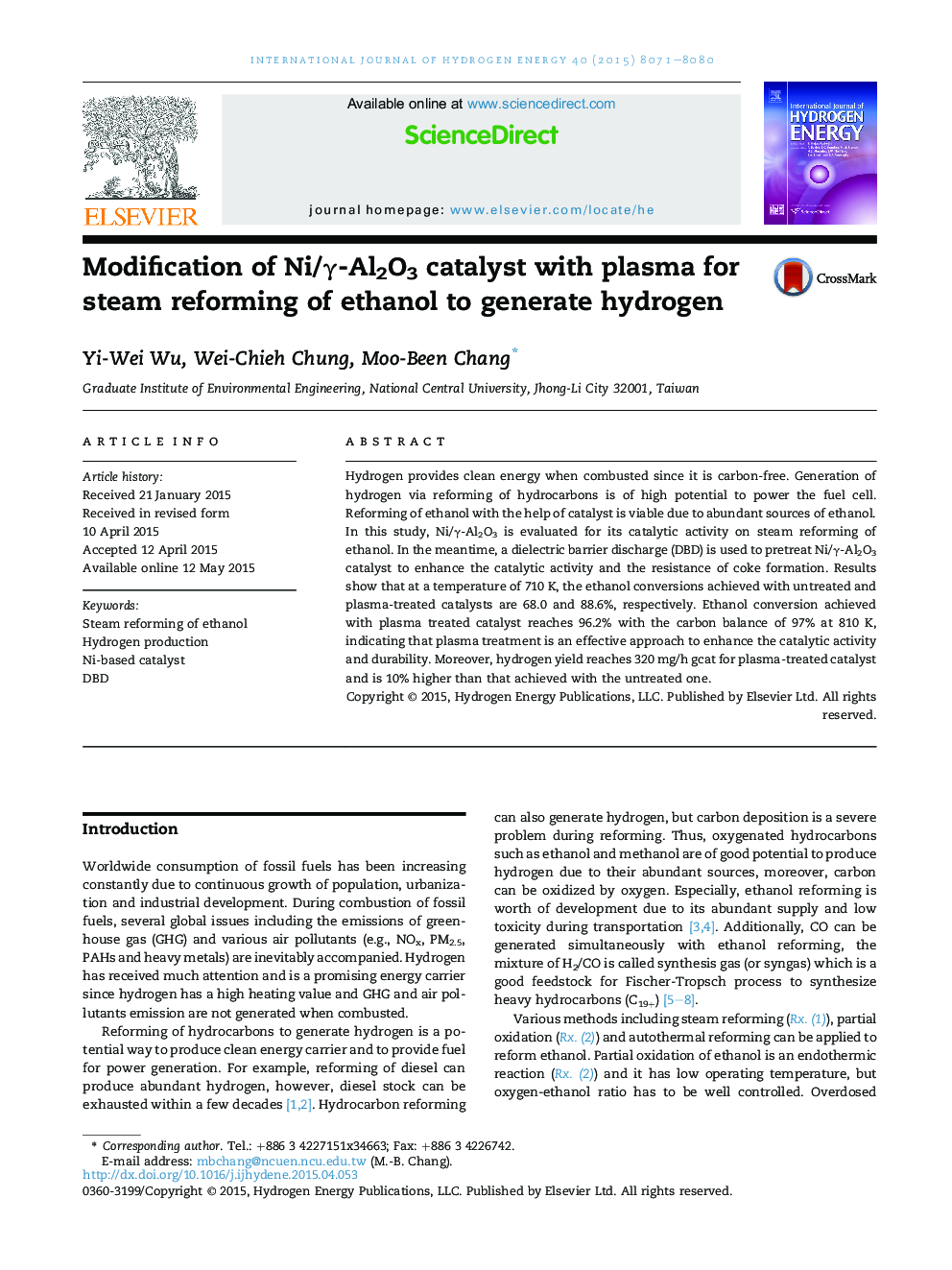| Article ID | Journal | Published Year | Pages | File Type |
|---|---|---|---|---|
| 1270803 | International Journal of Hydrogen Energy | 2015 | 10 Pages |
•Ethanol conversion achieved with plasma-treated Ni/γ-Al2O3 catalyst reaches 99.9% at 1010 K.•Catalyst treated with plasma achieves higher ethanol conversion and hydrogen selectivity.•Higher carbon balance achieved with plasma-treated catalyst indicates lower coke formation and better durability.•Hydrogen yield achieved with plasma-treated Ni/γ-Al2O3 catalyst reaches 320 mg/h gcat at 1010 K.
Hydrogen provides clean energy when combusted since it is carbon-free. Generation of hydrogen via reforming of hydrocarbons is of high potential to power the fuel cell. Reforming of ethanol with the help of catalyst is viable due to abundant sources of ethanol. In this study, Ni/γ-Al2O3 is evaluated for its catalytic activity on steam reforming of ethanol. In the meantime, a dielectric barrier discharge (DBD) is used to pretreat Ni/γ-Al2O3 catalyst to enhance the catalytic activity and the resistance of coke formation. Results show that at a temperature of 710 K, the ethanol conversions achieved with untreated and plasma-treated catalysts are 68.0 and 88.6%, respectively. Ethanol conversion achieved with plasma treated catalyst reaches 96.2% with the carbon balance of 97% at 810 K, indicating that plasma treatment is an effective approach to enhance the catalytic activity and durability. Moreover, hydrogen yield reaches 320 mg/h gcat for plasma-treated catalyst and is 10% higher than that achieved with the untreated one.
Graphical abstractFigure optionsDownload full-size imageDownload as PowerPoint slide
